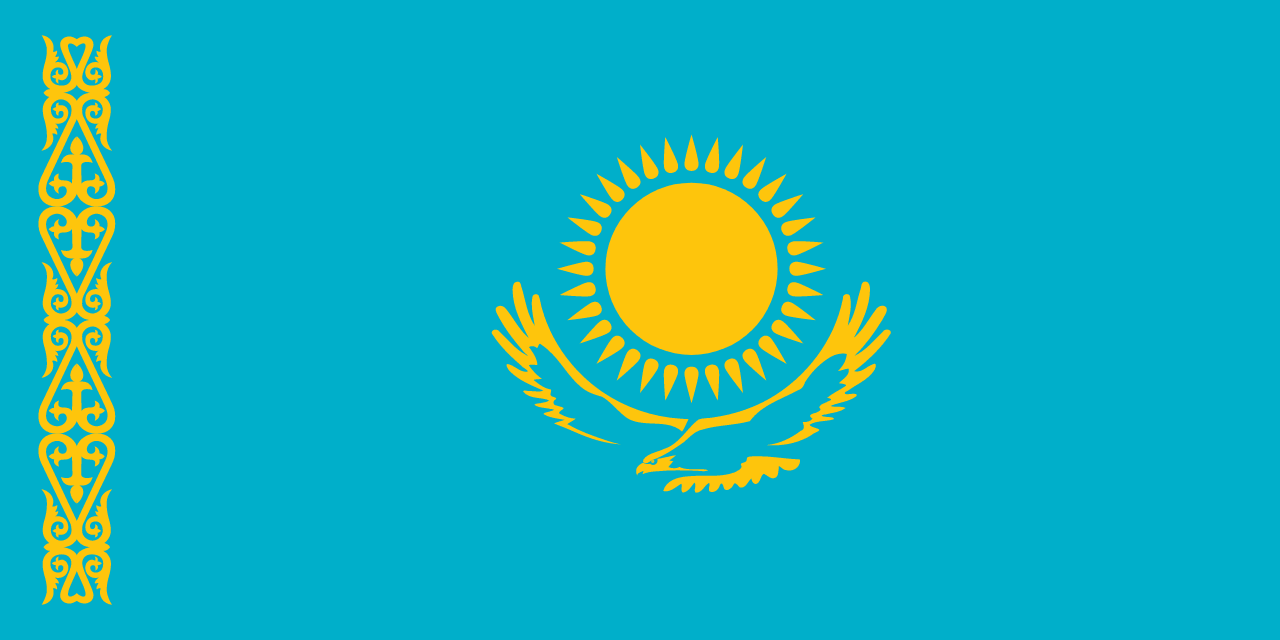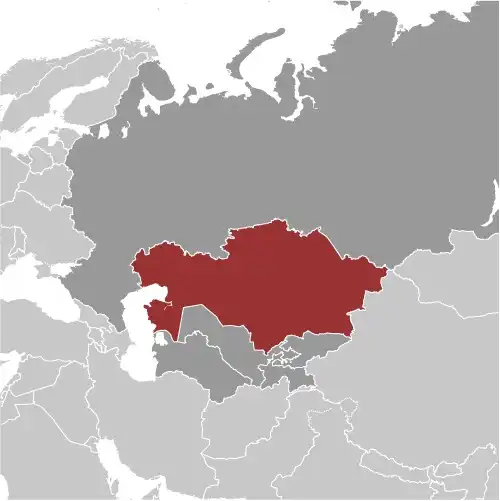
Kazakhstan Country Profile
Key Facts of Kazakhstan

| Government type: | presidential republic |
| Capital: | Astana |
| Languages: | Kazakh (official, Qazaq) 80.1%, Russian 83.7%, English 35.1% (2021 est.) |
Kazakhstan Demographic Data
Ethnic Groups in Kazakhstan(2023 est.)
Religious Groups in Kazakhstan (2021 est.)
Age pyramid of Kazakhstan

Kazakhstan Economy Statistics
Economic overview of Kazakhstan
oil and gas giant, with growing international investment; domestic economy hit hard by COVID-19 disruptions; reforming civil society and improving business confidence; legacy state controls and Russian influence inhibit growth and autonomy
Kazakhstan Real GDP (purchasing power parity) in Billion $
Kazakhstan Real GDP per capita in $
Kazakhstan's Exports & Imports in billion $
Top 5 Import Partnerin 2022 (69%) of Kazakhstan
Top 5 Import Commodities in 2022 of Kazakhstan
- garments 👕
- cars 🚗
- broadcasting equipment 📡
- plastic products ♻️
- packaged medicine 💊
Top 5 Export Partnerin 2022 (50%) of Kazakhstan
Top 5 Export Commodities in 2022 of Kazakhstan
- crude petroleum 🛢️
- gold 💰
- refined copper 🟧🪙
- iron alloys 🪓
- radioactive chemicals 🪨
Geography of Kazakhstan
Map of Kazakhstan

Land and Water Distrubtion of Kazakhstan
Natural Resources of Kazakhstan
- major deposits of petroleum 🛢️
- natural gas 💨
- coal ⚫
- iron ore ⛓️
- manganese 🪙
- chrome ore 🟦
- nickel 🪙
- cobalt 🪙
- copper 🟧🪙
- molybdenum 🪨
- lead 🪙
- zinc 🔩
- bauxite 🪨
- gold 💰
- uranium ☢️
Climate inKazakhstan
continental, cold winters and hot summers, arid and semiarid
History of Kazakhstan - a Summary
Ethnic Kazakhs derive from a mix of Turkic nomadic tribes that migrated to the region in the 15th century. The Russian Empire conquered the Kazakh steppe in the 18th and 19th centuries, and Kazakhstan became a Soviet Republic in 1925. Forced agricultural collectivization led to repression and starvation, resulting in more than a million deaths in the early 1930s. During the 1950s and 1960s, the agricultural "Virgin Lands" program generated an influx of settlers -- mostly ethnic Russians, but also other nationalities -- and by the time of Kazakhstan’s independence in 1991, ethnic Kazakhs were a minority. However, non-Muslim ethnic minorities departed Kazakhstan in large numbers from the mid-1990s through the mid-2000s, and a national program has repatriated about a million ethnic Kazakhs (from Uzbekistan, Tajikistan, Mongolia, and the Xinjiang region of China) to Kazakhstan. As a result of this shift, the ethnic Kazakh share of the population now exceeds two-thirds.
Kazakhstan's economy is the largest in Central Asia, mainly due to the country's vast natural resources. Current issues include diversifying the economy, attracting foreign direct investment, enhancing Kazakhstan's economic competitiveness, and strengthening economic relations with neighboring states and foreign powers.
